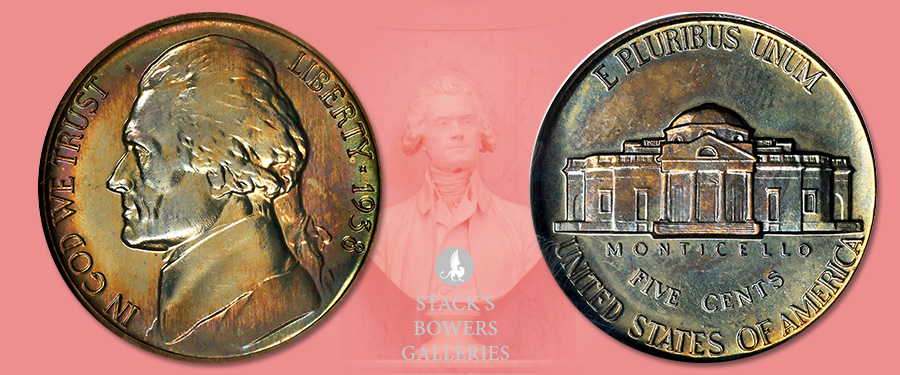
Eighty-five years ago this month, Felix Oscar Schlag submitted the final designs for the Jefferson nickel for approval, which came shortly after. Production of the new nickels began in the fall of that year, a design that would last for the rest of the century.
Schlag was born in Frankfurt-am-Main, Germany in 1891 and attended the Royal Academy of Fine Arts in Munich after working in his father’s sculpture studio. He won his first award for his own sculpture in 1908. He served in the German Army in the First World War and was wounded in late 1914 and recovered over a period of more than 300 days. His service concluded in early 1916 and he returned to his artistic studies and work. Schlag’s work was exhibited at the Art Exhibition at Munich’s Glass Palace in 1917. His work was exhibited widely and won awards through the 1920s as he finished his studies. Schlag immigrated to the United States in 1929, eventually settling in Chicago. He exhibited his work, which continued winning awards.
In the August 2014 edition of The Numismatist, researcher Fred Hufnagel wrote that Schlag is the only World War I combat veteran to design a U.S. coin.
In January 1938, the year Schlag would become a citizen, the Treasury Department launched a competition for new nickel five-cent piece designs with a $1,000 prize. The notice announcing the competition laid out clearly the requirements for the designs: “The subject matter must contain on the obverse of the coin an authentic portrait of Thomas Jefferson. On the reverse side the subject matter will be a representation of Monticello, Jefferson’s historic home near Charlottesville.” Schlag’s “authentic portrait” was based on Jean-Antoine Houdon’s bust of Jefferson and his depiction of Monticello captured the building from a corner view with foliage.
A three-person panel including then-Mint Director Nellie Tayloe Ross selected Schlag’s design, though his angled approach to Monticello was rejected in favor of a frontal view of the building strongly reminiscent of a design from another artist. The initial reverse design is generally well-thought of, with Cornelius Vermuele bemoaning the choice to change reverses. Recreations of the design have been produced by private mints over the years.
Schlag submitted his final designs with necessary modifications on July 12 – the Commission of Fine Arts gave their assent six days later. A few other minor alterations were made, and John Sinnock began preparing dies late in the month. After 18 years without them, Schlag’s initials began appearing on the five-cent coin bearing his designs in 1966. He died in 1974 but his Jefferson nickel endured, remaining on the denomination for another three decades.





